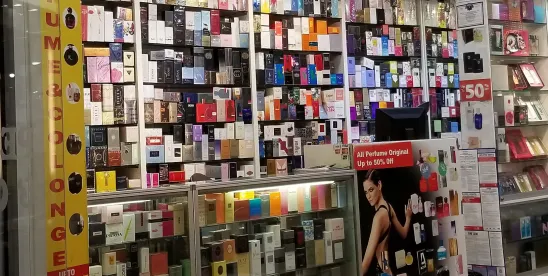Now that we’ve entered the holiday season, retailers everywhere are ramping up their promotions, offering discounts, special sales, and even “free” items. But in the frenzy to capture consumers’ attention and generate profits, it’s easy to run afoul of the laws governing promotional pricing — laws that are often less intuitive than they seem. What may appear to be a harmless sales tactic could quickly turn into a deceptive trade practice.
Adding to the challenge are the varying state regulations, which don’t always align with federal law or each other. That’s why it’s essential to factor in the time for legal review of your pricing and promotion plans. In the meantime, we’re sharing five common sales practices that can put your business at risk:
1. When Advertising Savings Compared to Former Prices Becomes Deceptive
Shoppers love a bargain, and businesses typically advertise that an item has been marked down — often with a strikethrough of the former price or by showing the savings as a percentage. However, this type of advertising can be deceptive if the stated former price is not the actual, bona fide price for a reasonably substantial period of time. In other words, an item cannot always be on sale – at a certain point, the sale price just becomes the original/primary price.
In addition, different states have different requirements or interpretations of when an advertised former price has been in place for a sufficient period of time. For example, Massachusetts law includes specific safe harbors that clarify when businesses can advertise a former price, and although these are not the only way an advertised former price is permitted, retailers promoting sales in Massachusetts should try to fall within these safe harbors.
2. When Offering Discounts on a Bundle Becomes Deceptive
Businesses often want to offer a “bargain” on one product if a customer purchases another product, for example, buy-one-get-one (BOGO) deals. For these types of offers, the advertisement will be deceptive if the price of the first product has been increased, or the quality or quantity of the bargain product was decreased in preparation for the promotion. Moreover, any other terms and conditions placed on the offer must be clearly and conspicuously disclosed.
3. When Advertising “Free” Items Becomes Deceptive
We all love free things, except, perhaps, the regulators when the advertisements are deceptive. When advertising something for free (directly or indirectly), businesses must clearly and conspicuously disclose any and all conditions near the “free” offer — for example, if it’s only free with the purchase of something else. And, at least the Federal Trade Commission (FTC), the primary federal regulator, views use of an asterisk and small font in a footnote for such disclosures as insufficient.
But beware that there are also other types of restrictions relating to advertising items for free that are less intuitive. For example, there are restrictions on offering new products for free, and on the frequency of “free” offers. More specifically, businesses should not offer any new or introductory product for free unless it in good faith expects to discontinue the offer after a limited period and sell the product at the advertised regular price. And, under federal guidance, businesses should not offer something for “free” within a given trade area more than six months in any 12-month period, and there should be at least 30 days between each such promotion.
4. When Comparing Pricing to Identical Products Becomes Deceptive
Businesses sometimes compare the price of an item to the manufacturer’s suggested retail price or some other comparable value, for example, by saying something like “retail value.” Of course, these types of comparisons must be true. But what may be less intuitive is that businesses should only compare its own price to a manufacturer’s suggested retail price (MSRP) or other comparable retail value when that is the price at which substantial sales are made in the area.
For example, if a business offers a product for sale at $10 and advertises that its retail value is $20, a substantial number of retailers in the area must offer the product for sale at $20. If only one or two other retailers sell it for $20, but eight other larger retailers sell it for $10, at least federal regulators would view an advertisement stating that the retail value is $20 as deceptive.
There can also be different, but related types of requirements – for example, Massachusetts generally requires a business to expressly state the basis for any price comparison other than a comparison to its own former price.
5. When Comparing Pricing to Similar (But Not Identical) Products Becomes Deceptive
When comparing prices to those of similar products, similar requirements will apply. Specifically, the price for the comparable products must be offered by a significant number of sellers in the area. In addition, for these types of comparisons, the relevant products must be truly comparable, i.e., there should not be any meaningful differences in the compared products. For example, if you use a higher “comparable value,” but you are comparing to a product of a higher quality, that would be deceptive.



 />i
/>i

